Limiting of Carbon Dioxide Emissions through Rational Management of Pro-Ecological Activities in the Context of CSR Assumptions
Abstract
:1. Introduction
2. Materials and Methods
- What CSR activities can directly contribute to limiting of carbon dioxide emissions?
- How else can you reduce carbon dioxide emissions?
3. Results
- Fossil fuel combustion in power plants;
- Transport—cars and planes;
- Processes related to the production of industrial goods;
- Deforestation.
- Carbon dioxide—72%;
- Methane—18%;
- Nitrogen oxide—7%.
- Energy—30% of emissions (+8% production);
- Industry—20%;
- Transport—20%;
- Construction and operation of residential, office, and commercial buildings—10%;
- Deforestation and biomass combustion—10%.
3.1. Reduction of Carbon Dioxide Emissions by Workplaces
3.1.1. CO2 Reduction through the Implementation of CSR Principles
- Environment;
- Fair market practices;
- Human rights;
- Labor relations;
- Organizational governance;
- Relations with consumers;
- Social commitment.
- Activities for the local community (projects for the environment in which the enterprise operates), most often taking the form of activities consisting of: supporting local institutions and people, cooperation with local organizations, creating and implementing programs for children and youth, including environmental programs, and also the implementation of investment activities, taking into account the principles of sustainable development (e.g., road construction);
- Creating social reports—publications presenting the method of managing the company and implementing the company’s strategy, taking into account socially responsible activities, the main essence of which is the company’s transparency;
- Employee volunteering, consisting of volunteering on the part of the company’s employees for pro-ecological and pro-social initiatives, etc.;
- Management systems—introducing transparent and effective management systems, i.e., ISO 9000 Quality Management System, ISO 14000 Environmental Management System (environmental management system), Social Accountability SA 8000 (social responsibility management);
- Product labeling—includes the so-called eco-labeling and social labeling, which consists of informing the consumer about the ecological aspects of the product (environmental, health) and social aspects. As a result, labeled products stand out from other products on the market, allowing consumers to make informed choices. At the same time, manufacturers provide reliable information about the composition of products and the content of individual ingredients;
- Pro-ecological activities—activities aimed at environmental protection and investments minimizing the impact on the environment, including initiatives such as: implementation of environmental policy, sustainable management of raw materials, waste segregation, environmental education of employees and customers, including the implementation of ecological technological processes and ecological products and services;
- Employee programs—including environmental education programs for employees and their families, e.g., through the implementation of integration programs;
- Social campaigns—they enable enterprises to influence the attitudes of society through the media; these campaigns are aimed at helping those in need (e.g., transferring some of the profits from the sale of a specific product to social goals or pro-environmental activities) or increasing social awareness on a specific topic (e.g., environmental protection, consumer education);
- Supply chain management—application of the principles of corporate social responsibility at every stage of the supply chain, implementation of standards for all contractors, etc., in accordance with ISO 28000—Supply Chain Security Management [4].
- Benefits resulting from the social environment—reducing the negative impact of enterprises on the natural environment;
- Economic benefits—they have higher current liquidity and obtain higher profitability of sales;
- Plan—at this stage, these are, for example, pro-ecological activities for the local community, projects for the environment in which the company operates;
- Do—pro-ecological activities, i.e., activities for environmental protection, investments minimizing the impact on the environment. These include initiatives such as the implementation of environmental policy, sustainable management of raw materials, waste segregation, environmental education of employees and customers, as well as the implementation of ecological technological processes and ecological services and products;
- Check—verification of the assumptions of pro-ecological activities and the status of their implementation;
- Action—the implementation of planned activities, including, for example, social campaigns enabling enterprises, through the media, to achieve environmental goals, including those contributing to the reduction of carbon dioxide emissions.
3.1.2. An Example of Reducing Carbon Dioxide Emissions Based on Desk Research of Publicly Available Documents of a Selected Global Company
- Reduction of water consumption (e.g., by installing photocells) and paper;
- Reducing the consumption of fossil fuels: oil and gas (the use of videoconferences instead of traveling to meetings by car);
- Reduction of pollutant emissions and the amount of solid waste generated as part of recycling;
- Education for sustainable development;
- Better monitoring and management of waste streams (also by introducing dedicated recycling points in all buildings/premises where the company operates);
- Promotion and functioning in accordance with the principle that one should act to create a “paperless” environment;
- Encouraging the optimization of energy consumption and gas emissions to the atmosphere.
3.2. Reduction of Carbon Dioxide Emissions by Companies Involved in Energy Production
- Methane:CH₄ + 2 O2 → CO2 + 2 H2O
- Carbon monoxide:CO + 0.5 O2 → CO2
3.2.1. Types of Natural Gas
- E-type high-methane natural gas—this is a gas with high methane content (about 98%) and trace amounts of nitrogen (about 1%) and flammable gases (about 1%). The minimum heat of combustion for E-type gas was set at 34 MJ/m3n. Type E high-methane natural gas is distributed in municipal gas networks as the so-called network fuel for household, corporate, industrial, and municipal use;
- Ln and Lm nitrogen-rich natural gas—this is natural gas with the lowest relative methane content—in the Ln gas type it is less than 66%, and in the Lm gas type less than 61%. The gas contains a significant amount of nitrogen (at least 32%) and negligible amounts of combustible gases and CO2 (about 1% each). The minimum heat of combustion for Ln and Lm natural gas was set at 22 MJ/m3n and 18 MJ/m3n, respectively;
- Ls nitrogen-rich natural gas—a gas with a reduced volume of methane in relation to the LW-type nitrogen-rich gas (here the volume of methane is less than 72%) with a large admixture of non-flammable nitrogen (about 27%) and trace amounts of combustible gases and CO2 (about 1% each). The minimum heat of combustion of Ls nitrogen-rich gas was set at 26 MJ/m3n;
- Lw nitrogen-rich natural gas—a gas with a much smaller amount of methane by volume (less than 80%), with an admixture of non-flammable nitrogen (about 20%) and combustible gases (about 1%). The minimum heat of combustion for the Lw nitrogen-rich gas was set at 30 MJ/m3n [47].
- Propane-butane gas with a high level of heat of combustion determined at not less than 111.6 MJ/m3n;
- Propane-butane gas with a relatively low level of heat of combustion determined at not less than 23.3 MJ/m3n.
3.2.2. Comparative Analysis of Combustible Gases—Natural Gas and Coke Oven Gas—In Terms of Reducing CO2 Emissions
carbon dioxide CO2 = 0.5%, nitrogen N2 = 2.6%
oxygen: O2 = 0.9%
3.2.3. An Example of Analysis of the Composition of Natural and Coke Oven Gas Burned in the “Marcel” CHP Plant—Case Study
- Heat generation;
- Heat transmission and distribution;
- Electricity generation;
- Transmission and distribution of electricity.
- Combustion reactions of selected gas components:
- For natural gas (NG):
- For coke oven gas (COG):
- Natural gas is approx. 32.1 MJ/m3n,and;
- Coke oven gas is on the order of 19.8 MJ/m3n.
4. Discussion
- Being an industry leader in conducting business in a sustainable manner;
- Building experiences in the workplace;
- Educating employees on environmental issues, for example, through revitalization or volunteering to create “proactive eco-citizenship” so that they become better inhabitants of our planet [49];
- Educating and engaging employees and encouraging them in efforts to protect the environment, also outside the workplace, in their homes, and in the neighborhood where they live;
- Providing alternative means of transport;
- Reduction of the carbon footprint per employee (carbon footprint—CF) worldwide;
- Enterprises are recommended to use ecological marketing tools [3].
5. Conclusions
- Theoretical,
- Managerial, and
- Practical implications.
Author Contributions
Funding
Institutional Review Board Statement
Informed Consent Statement
Data Availability Statement
Conflicts of Interest
References
- Energia i Emisje CO2. Available online: https://ziemianarozdrozu.pl/encyklopedia/38/energia-i-emisje-co2 (accessed on 24 April 2021).
- Leonov, S.V.; Vasilyeva, T.A.; Shvindina, H.O. Methodological approach to design the organizational development evaluation system. Sci. Bull. Polissia 2017, 2, 51–56. [Google Scholar] [CrossRef] [Green Version]
- Kuzior, A.; Lobanova, A. Tools of Information and Communication Technologies in Ecological Marketing under Conditions of Sustainable Development in Industrial Regions (Through Examples of Poland and Ukraine). J. Risk Financ. Manag. 2020, 13, 238. [Google Scholar] [CrossRef]
- CSR—Społeczna Odpowiedzialność Biznesu. Available online: https://www.parp.gov.pl/csr (accessed on 24 April 2021).
- Kuzior, A. Polskie i niemieckie doświadczenia w projektowaniu i wdrażaniu zrównoważonego rozwoju [Polish and German Experiences in Planning and Implementation of Sustainable Development]. Probl. Ekorozw. Probl. Sustain. Dev. 2010, 5, 81–89. [Google Scholar]
- Kustroń, P.; Pająk, T. Cykl Deminga. In Encyklopedia Zarządzania. Available online: https://mfiles.pl/pl/index.php/Cykl_Deminga (accessed on 24 April 2021).
- Ali, S.S.; Kaur, R. Effectiveness of corporate social responsibility (CSR) in implementation of social sustainability in warehousing of developing countries: A hybrid approach. J. Clean. Prod. 2021, 324, 129154. Available online: https://www.sciencedirect.com/science/article/pii/S0959652621033400 (accessed on 15 December 2021). [CrossRef]
- Chaudhry, S.M.; Saeed, A.; Ahmed, R. Carbon neutrality; The role of banks in optimal environmental management strategies. J. Environ. Manag. 2021, 299, 113545. [Google Scholar] [CrossRef] [PubMed]
- Hassan, T.H.; Shehata, H.S.; El-Dief, M.; Salem, A.E. The social responsibility of tourism and hotel establishments and their role in sustainable tourism development in Al-Ahsa, Saudi Arabia. Geoj. Tour. Geosites 2021, 33, 1564–1570. [Google Scholar] [CrossRef]
- Sarkar, A.; Qian, L.; Peau, A.K. Overview of green business practices within the Bangladeshi RMG industry: Competitiveness and sustainable development perspective. Environ. Sci. Pollut. Res. 2020, 27, 22888–22901. [Google Scholar] [CrossRef] [PubMed]
- Topleva, S.A.; Prokopov, T.V. Integrated business model for sustainability of small and medium-sized enterprises in the food industry: Creating value added through eco-design. Br. Food J. 2020, 122, 1463–1483. [Google Scholar] [CrossRef]
- Kallmuenzer, A.; Nikolakis, W.; Peters, M.; Zanon, J. Trade-offs between dimensions of sustainability: Exploratory evidence from family firms in rural tourism regions. J. Sustain. Tour. 2018, 26, 1204–1221. [Google Scholar] [CrossRef]
- Domínguez-Herrera, M.M.; González-Morales, O.; González-Díaz, E. Corporate social responsibility of the construction sector in Spain. In Corporate Social Responsibility (CSR): Practices, Issues and Global Perspectives; Willumstad School of Business, Adelphi University: Garden City, NY, USA, 2018; pp. 215–268. [Google Scholar]
- Ravochkin, N.; Shchennikov, V.; Syrov, V. Corporate Social and Ecological Responsibility of Russian Coal Mining Companies. E3S Web Conf. 2017, 21, 04017. [Google Scholar] [CrossRef] [Green Version]
- Kuzior, A.; Ober, J.; Karwot, J. Stakeholder Expectation of Corporate Social Responsibility Practices: A Case Study of PWiK Rybnik, Poland. Energies 2021, 14, 3337. [Google Scholar] [CrossRef]
- Postrzednik, S. Selective obtaining of the coke oven gas. In KARBO; No 4; Instytut Chemicznej Przeróbki Węgla: Zabrze, Poland, 2011. [Google Scholar]
- Meseguer-Sánchez, V.; Gálvez-Sánchez, F.J.; López-Martínez, G.; Molina-Moreno, V. Corporate Social Responsibility and Sustainability. A Bibliometric Analysis of Their Interrelations. Sustainability 2021, 13, 1636. [Google Scholar] [CrossRef]
- Babbie, E. The Practice of Social Research; Cengage Learning: Boston, MA, USA, 2020. [Google Scholar]
- Bartnikowska, U. Analiza Wtórna Jakościowych Danych Zastanych: Przegląd Założeń i Aplikacji Metodologicznych “Jakościowe Badania Pedagogiczne”; Wydawnictwo Naukowe Uniwersytetu Szczecińskiego: Szczecin, Poland, 2017. [Google Scholar]
- Bednarowska, Z. Desk Research—Wykorzystanie Potencjału Danych Zastanych w Prowadzeniu Badań Marketingowych i Społecznych “Marketing i Rynek”; Uniwersytet Jagielloński w Krakowie: Kraków, Poland, 2015. [Google Scholar]
- Krzyszkowski, J. Analiza Dotychczasowych Doświadczeń (Desk Research) w Obszarze Pracy Socjalnej i Polityki Społecznej “Stowarzyszenie c.a.l.”; Uniwersytet Łódzki: Łódź, Poland, 2013. [Google Scholar]
- Makowska, M. Analiza Danych Zastanych. Przewodnik dla Studentów; Wydawnictwo Naukowe Scholar: Warszawa, Poland, 2013. [Google Scholar]
- Frankfort-Nachmias, C.; Nachmias, D.; DeWaard, J. Research Methods in the Social Sciences; Worth Publishers: New York, NY, USA, 2015. [Google Scholar]
- Smith, E. Using Secondary Data in Educational and Social Research; McGraw-Hill Education: New York, NY, USA, 2008. [Google Scholar]
- Biostat: Analiza Danych Zastanych (Desk Research). Available online: https://www.biostat.com.pl/desk-research.php (accessed on 24 April 2021).
- Grebski, M. Mobility of the Workforce and Its Influence on Innovativeness (Comparative Analysis of the United States and Poland). Prod. Eng. Arch. 2021, 27, 272–276. [Google Scholar] [CrossRef]
- Ober, J.; Kochmańska, A. Adaptation of Innovations in the IT Industry in Poland: The Impact of Selected Internal Communication Factors. Sustainability 2022, 14, 140. [Google Scholar] [CrossRef]
- Dmitruki, J.; Gawinecki, J. Metody Wielowymiarowej Analizy Porównawczej—Budowa i Zastosowanie; Biuletyn WAT: Warszawa, Poland, 2017; Volume LXVI, No. 4. [Google Scholar]
- Rataj, M. Analiza porównawcza sposobu pomiaru jakości spalania gazu w palnikach odkrytych. Nafta-Gaz 2011, 67, 263–267. [Google Scholar]
- Kożuch, A.; Marzec, I. Studium przypadku jako strategia badawcza w naukach społecznych. J. Sci. Gen. Tadeusz Kosciuszko Mil. Acad. Land Forces 2014, 172, 32–44. [Google Scholar] [CrossRef]
- Mielcarek, P. Metoda case study w rozwoju teorii naukowych. In Organizacja i Kierowanie; SGH: Warszawa, Poland, 2014; p. 161. [Google Scholar]
- Luboińska, U. Emisja Gazów Cieplarnianych. Wybrane Zagadnienia Dotyczące Emisji CO2 w Polsce. Opracowania Tematyczne OT-683. Kancelaria Senatu, Biuro Analiz, Dokumentacji i Korespondencji, Warszawa. 2020; p. 3f. Available online: https://www.senat.gov.pl/gfx/senat/pl/senatopracowania/192/plik/ot-683.pdf (accessed on 24 April 2021).
- Encyklopedia, Ziemia na rozdrożu. Available online: https://ziemianarozdrozu.pl/encyklopedia (accessed on 24 April 2021).
- Kuzior, A.; Kwilinski, A.; Hroznyi, I. The Factorial-Reflexive Approach to Diagnosing the Executors’ and Contractors’ Attitude to Achieving the Objectives by Energy Supplying Companies. Energies 2021, 14, 2572. [Google Scholar] [CrossRef]
- Postrzednik, S. Feste Brennstoffe: Analyse des Entgasungsprozesses—Anwendung des Einflußfaktoren—Prozeßfunktionen—Algorithmus. Erdöl Kohle Erdgas Petrochem. Hydrocarb. Technol. 1991, 44, 207–212. [Google Scholar]
- Global Monitoring Laboratory. Earth System Research Laboratories. Available online: https://gml.noaa.gov/aggi/aggi.html (accessed on 15 December 2021).
- SEGRO—Polityka Różnorodności i Integracji. Available online: https://www.segro.com/~/media/Files/S/Segro/documents/2018/Diversity-policies/SEGRO%20Diversity%20and%20Inclusion%20Policy%20Polish%20Version%202018.pdf (accessed on 24 April 2021).
- Integrated Performance Dashboard [from Teleperformance Group]. Available online: https://teleperformance.cotecorp.com/wp-content/uploads/2021/03/02-Strategy_21.pdf (accessed on 24 April 2021).
- MARSH—Różnorodność i Integracja. Available online: https://www.marsh.com/pl/pl/about-us/diversity-inclusion.html (accessed on 24 April 2021).
- Postrzednik, S. Analysis of Factors Determining the Course of Solid Fuel Devolatilization and Energy Consumption. Coke Mak. Int. 1991, 3, 48. [Google Scholar]
- Kwilinski, A.; Kuzior, A. Cognitive Technologies in the Management and Formation of Directions of the Priority Development of Industrial Enterprises. Manag. Syst. Prod. Eng. 2020, 28, 133–138. [Google Scholar] [CrossRef]
- Postrzednik-Lotko, K. Instrumenty wspierające etyczne zarządzanie przedsiębiorstwem globalnym. In Globalne Konteksty Poszanowania Praw i Wolności Człowieka; Kuzior, A., Ed.; Wydawnictwo Politechniki Śląskiej: Gliwice, Poland, 2020; pp. 249–259. [Google Scholar]
- Rymarczyk, J. Internacjonalizacja i Globalizacja Przedsiębiorstwa; Polskie Wydawnictwo Ekonomiczne: Warszawa, Poland, 2004. [Google Scholar]
- Oncioiu, I.; Petrescu, A.-G.; Bîlcan, F.-R.; Petrescu, M.; Fülöp, M.T.; Topor, D.I. The Influence of Corporate Governance Systems on a Company’s Market Value. Sustainability 2020, 12, 3114. [Google Scholar] [CrossRef] [Green Version]
- Teleperformance Citizen of the Planet Report. Available online: https://www.youtube.com/watch?v=WDh0Uv-2xwg (accessed on 24 April 2021).
- Karcz, A. Gaz koksowniczy jako surowiec do produkcji wodoru. Polityka Energetyczna 2009, 12, 111. [Google Scholar]
- Types of Natural Gas. Available online: https://poprostuenergia.pl/blog/rodzaje-gazu-ziemnego/ (accessed on 24 April 2021).
- Łukaszczyk, Z.; Badura, H.; Dźwigoł, R. Analiza kształtowania się wydajności otworów drenażowych metanu ze ścian eksploatacyjnych węgla kamiennego jako źródła energii—Studium przypadku. Rynek Energii 2021, 1, 16–25. [Google Scholar]
- Chodyński, A. Odpowiedzialność Ekologiczna w Proaktywnym Rozwoju Przedsiębiorstw, Krakowskie Towarzystwo Edukacyjne sp. z o.o.; Oficyna Wydawnicza AFM: Kraków, Poland, 2011. [Google Scholar]
- Shoko, E.; McLellan, B.; Dicks, A.L.; Da Costa, J.C.D. Hydrogen from coal: Production and utilization technologies. Int. J. Coal Geol. 2006, 65, 213–222. [Google Scholar] [CrossRef]
- Certyfikacja LEED w Pigułce. Available online: https://www.ecosquad.pl/leed-certyfikacja-wielokryterialna-leed--w-pigu-ce.html (accessed on 24 April 2021).
- Tippmer, K. Möglichkeiten der Gewinnung von Wasserstoff aus Kokereigas und Anwendung bei der Kohleveredelung. In Vortragsveröffentlichungen Kokereitechnik; Verein Deutscher Kokereifachleute e. V.: Essen, Germany, 1993. [Google Scholar]
- Tramer, A.; Ściażko, M.; Karcz, A. Techniczne aspekty wykorzystania gazu koksowniczego do pozyskiwania wodoru. Przemysł Chem. 2005, 84, 815–819. [Google Scholar]
- Whysall, M.; PICIO, K.W. Selection and revamp of hydrogen purification processes. In AIChE Spring Meeting; American Institute of Chemical Engineers: Houston, TX, USA, 1999. [Google Scholar]
- Grzegorczyk, W. (Ed.) Wybrane Problemy Zarządzania i Finansów; Wydawnictwo Uniwersytetu Łódzkiego: Łódź, Poland, 2015. [Google Scholar]
- Głowacka, E. Metoda case study w badaniach i dydaktyce bibliotekoznawstwa i informacji naukowej. Przegląd Bibl. 1986, 54, 25–32. [Google Scholar]
- Griffin, R.W. Fundamentals of Management; Cengage Learning, Inc.: Boston, MA, USA, 2015. [Google Scholar]
- Rej, Ł.; Maga, J.; Brzegowy, A. System zarządzania środowiskowego. In Encyklopedia Zarządzania; UE: Kraków, Poland, 2021; Available online: https://mfiles.pl/pl/index.php/System_zarz%C4%85dzania_%C5%9Brodowiskowego (accessed on 24 April 2021).
- Case Study. Available online: https://mfiles.pl/pl/index.php/Case_study (accessed on 24 April 2021).
- Sobolewski, A.; Ściążko, M. Rynek koksu i węgla koksowego na świecie. In KARBO; Wydanie Specjalne: Instytut Chemicznej Przeróbki Węgla: Zabrze, Poland, 2009; p. 7. [Google Scholar]
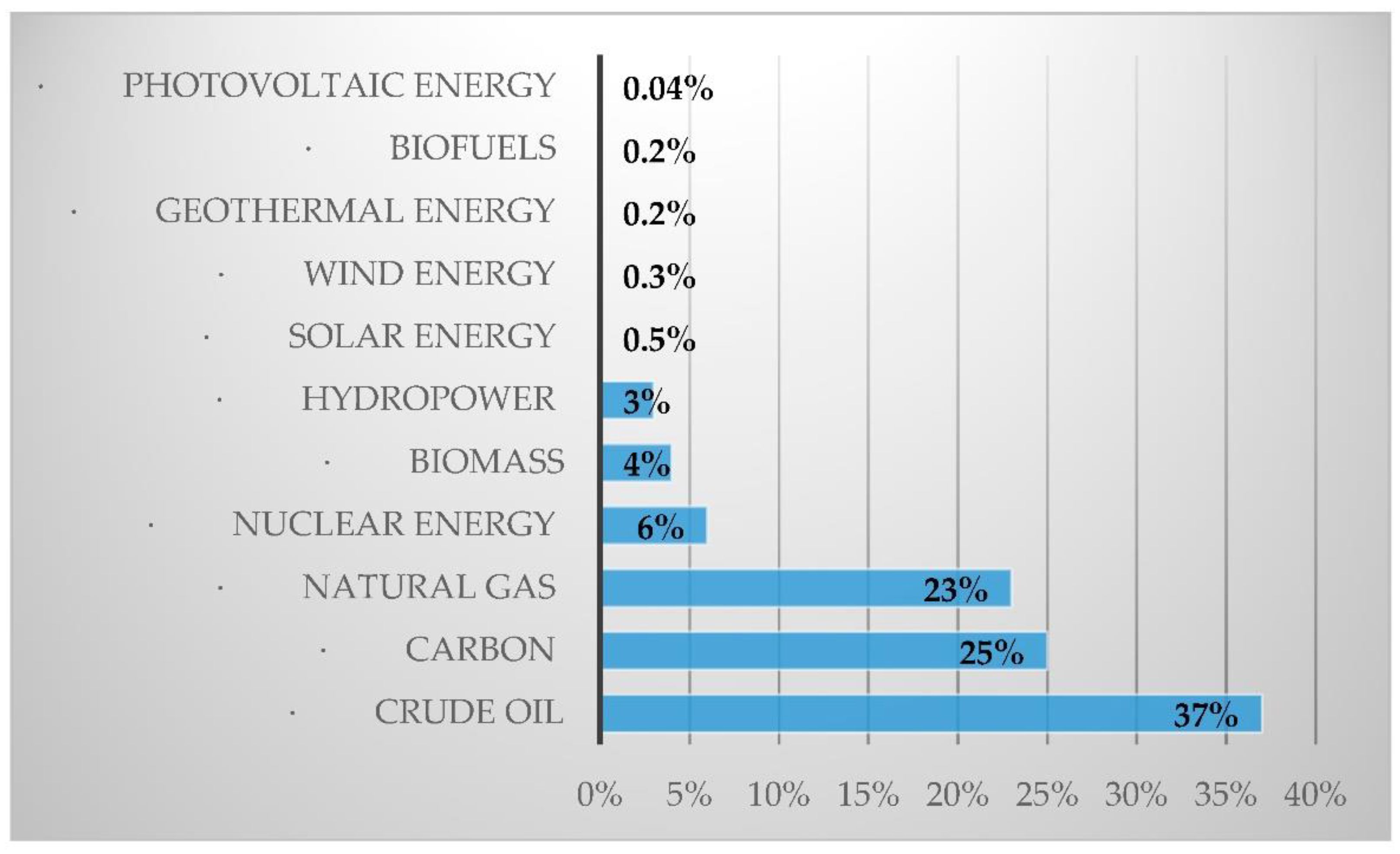
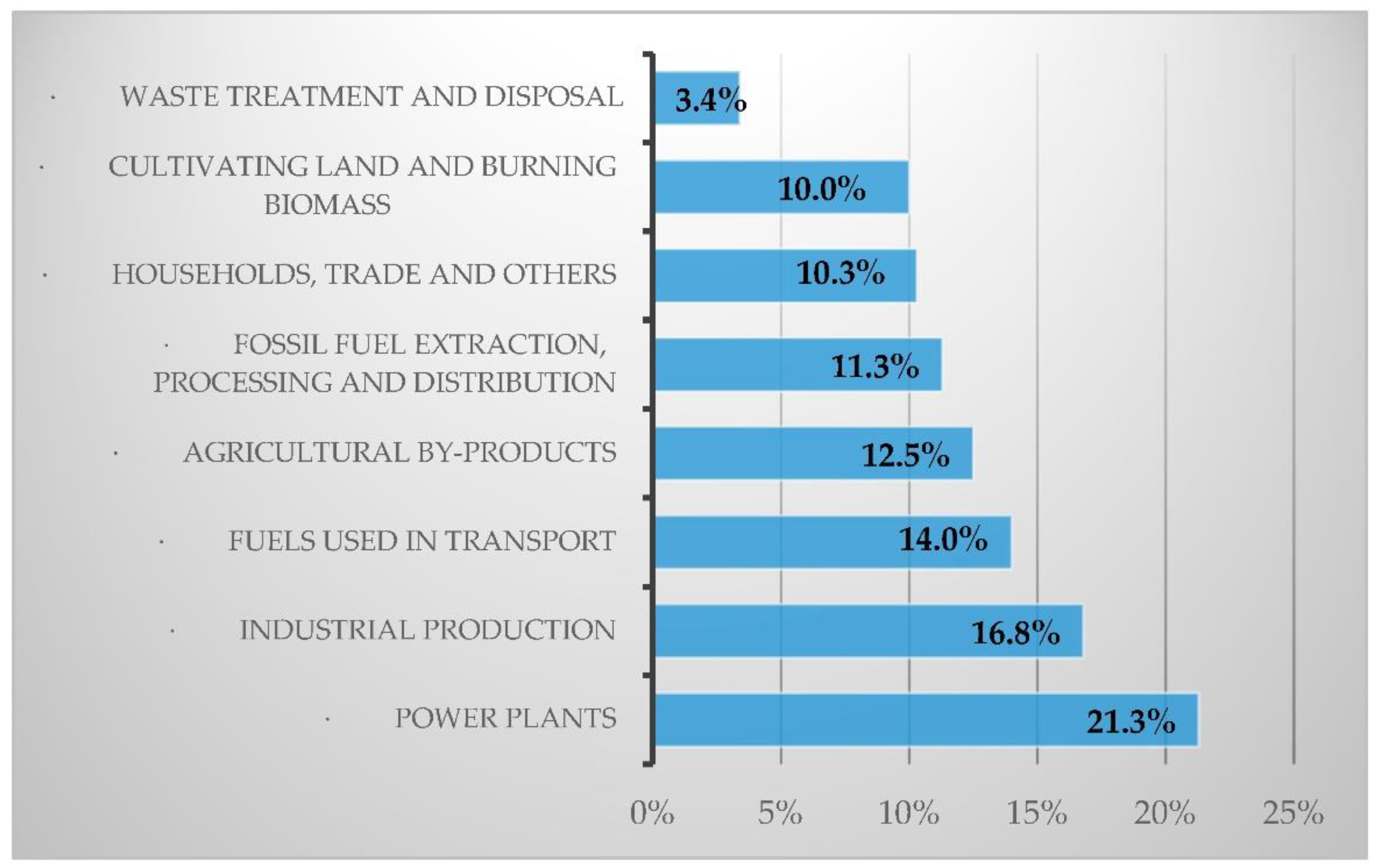
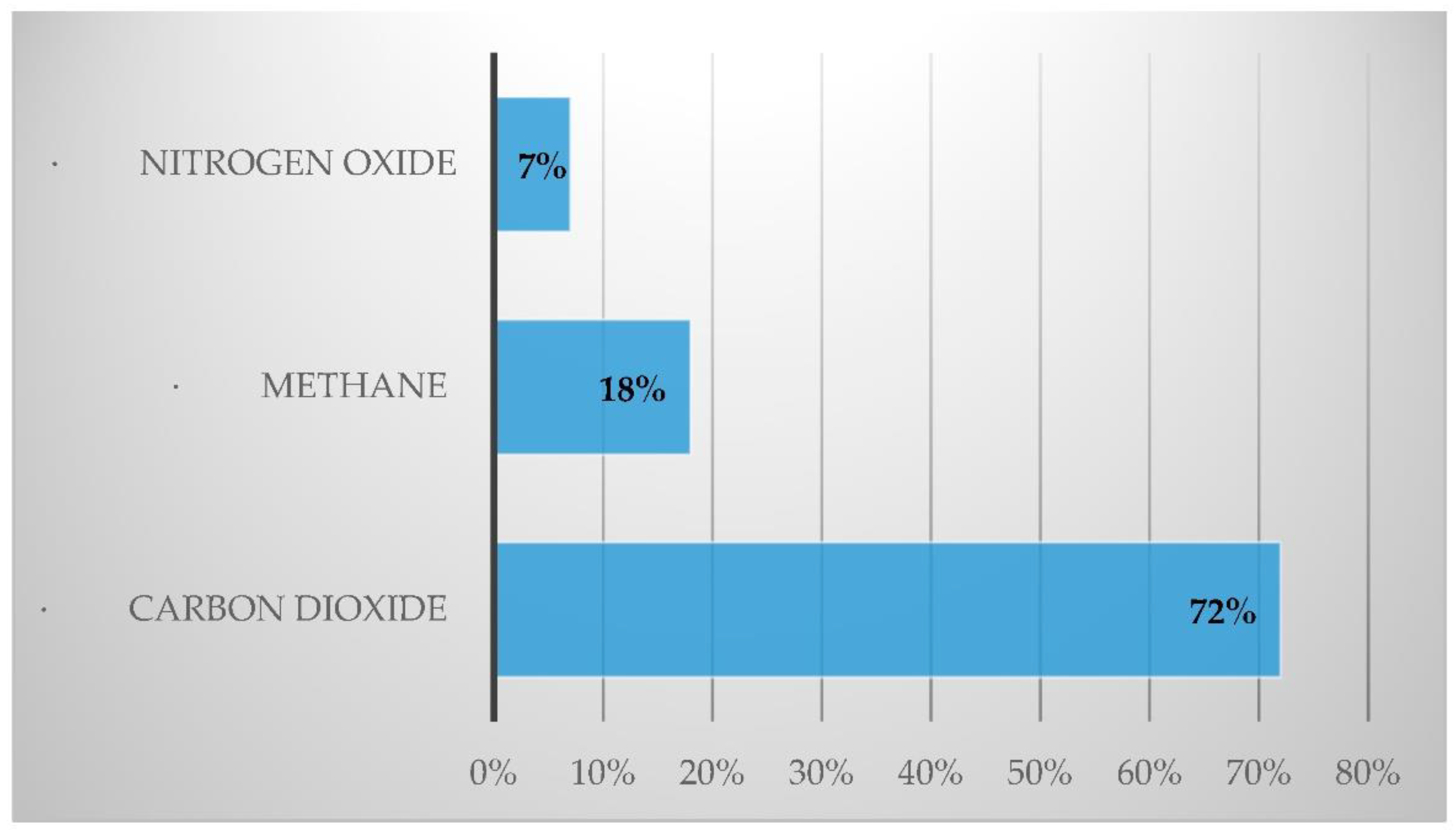

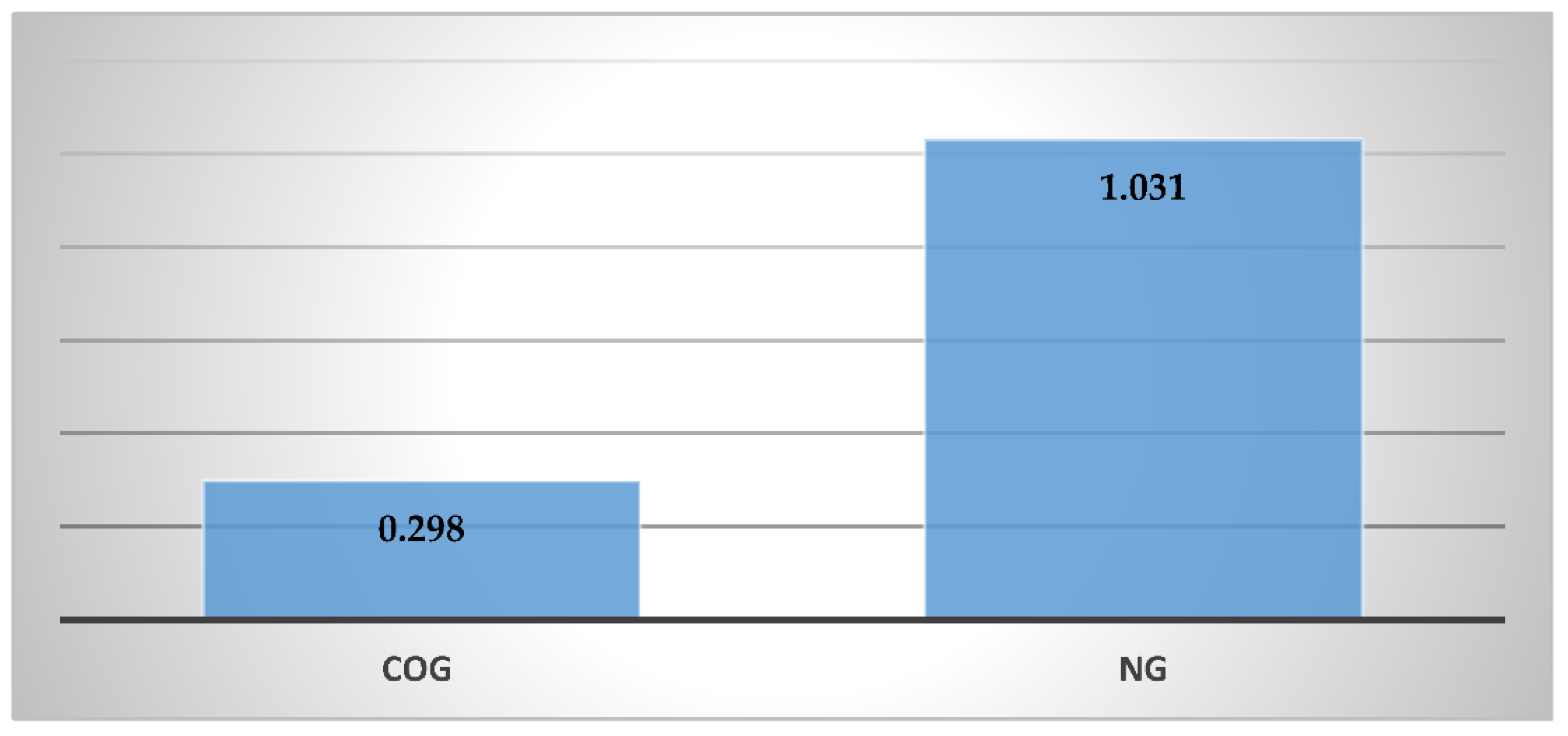
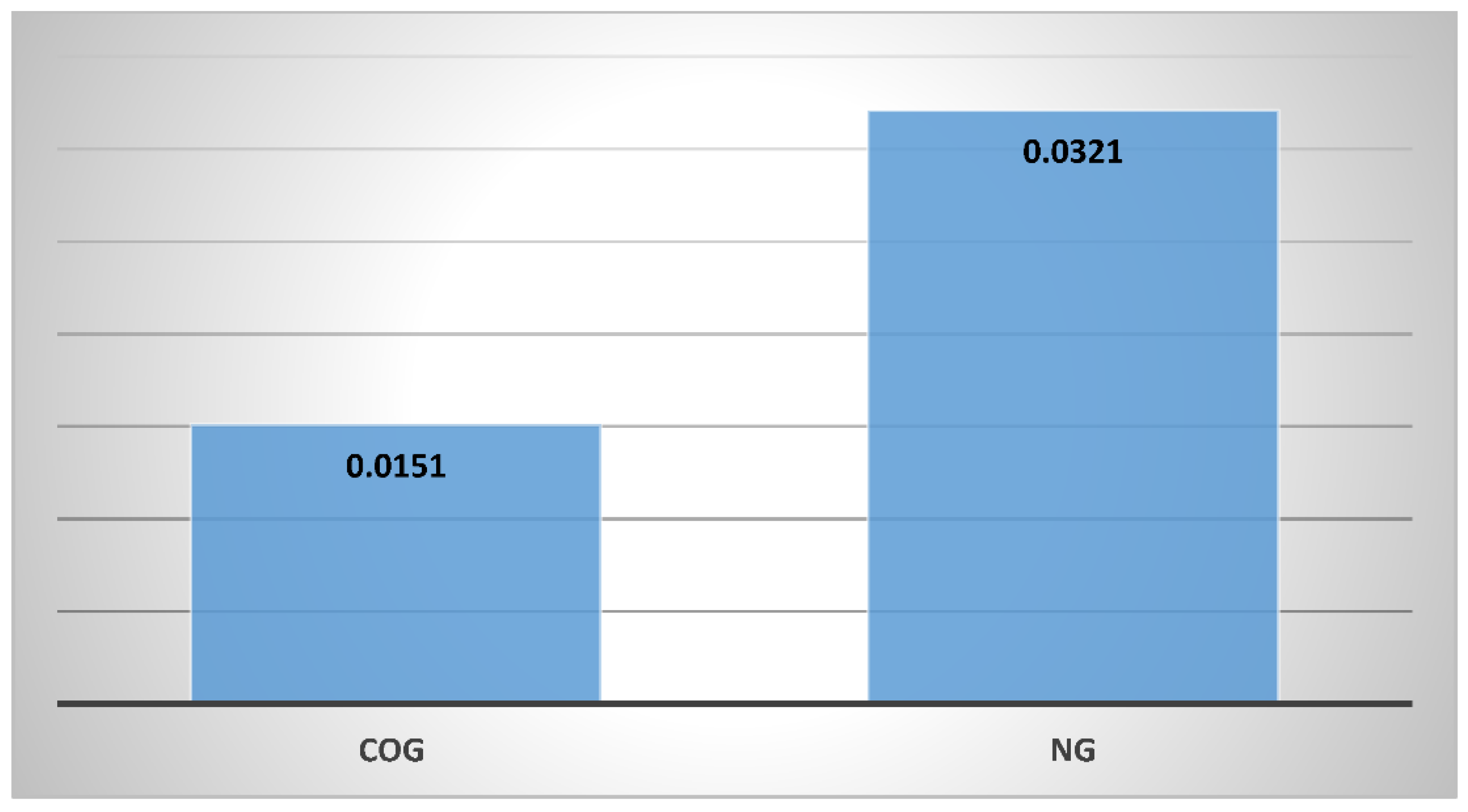
| Force of Good | 2017 | 2018 | 2019 | 2020 | Target |
|---|---|---|---|---|---|
| Carbon footprint per employee (tons CO2) | 0.772 | 0.712 | 0.682 | 0.495 | Commitment to SBTi in 2021 |
| Share of renewable energy in the Teleperformance Group’s total consumption | N/A | N/A | 11% (estimated) | 17% | 20% in 2021 25% in 2023 |
| Donations collected for environmental purposes (EUR/m) | 5.1 | 4.8 | 4.9 | 5.1 | min. 5.0 annually |
Publisher’s Note: MDPI stays neutral with regard to jurisdictional claims in published maps and institutional affiliations. |
© 2022 by the authors. Licensee MDPI, Basel, Switzerland. This article is an open access article distributed under the terms and conditions of the Creative Commons Attribution (CC BY) license (https://creativecommons.org/licenses/by/4.0/).
Share and Cite
Kuzior, A.; Postrzednik-Lotko, K.A.; Postrzednik, S. Limiting of Carbon Dioxide Emissions through Rational Management of Pro-Ecological Activities in the Context of CSR Assumptions. Energies 2022, 15, 1825. https://doi.org/10.3390/en15051825
Kuzior A, Postrzednik-Lotko KA, Postrzednik S. Limiting of Carbon Dioxide Emissions through Rational Management of Pro-Ecological Activities in the Context of CSR Assumptions. Energies. 2022; 15(5):1825. https://doi.org/10.3390/en15051825
Chicago/Turabian StyleKuzior, Aleksandra, Katarzyna Anna Postrzednik-Lotko, and Stefan Postrzednik. 2022. "Limiting of Carbon Dioxide Emissions through Rational Management of Pro-Ecological Activities in the Context of CSR Assumptions" Energies 15, no. 5: 1825. https://doi.org/10.3390/en15051825
APA StyleKuzior, A., Postrzednik-Lotko, K. A., & Postrzednik, S. (2022). Limiting of Carbon Dioxide Emissions through Rational Management of Pro-Ecological Activities in the Context of CSR Assumptions. Energies, 15(5), 1825. https://doi.org/10.3390/en15051825







